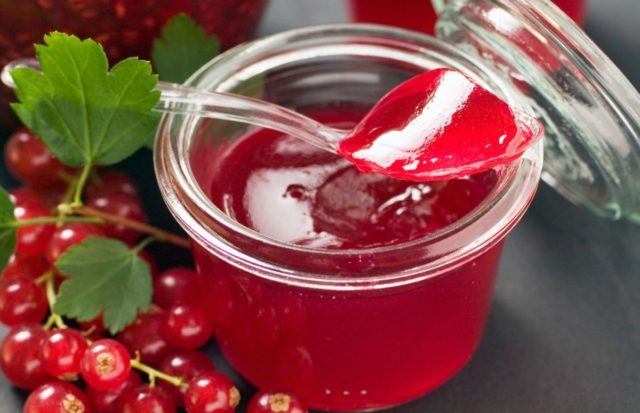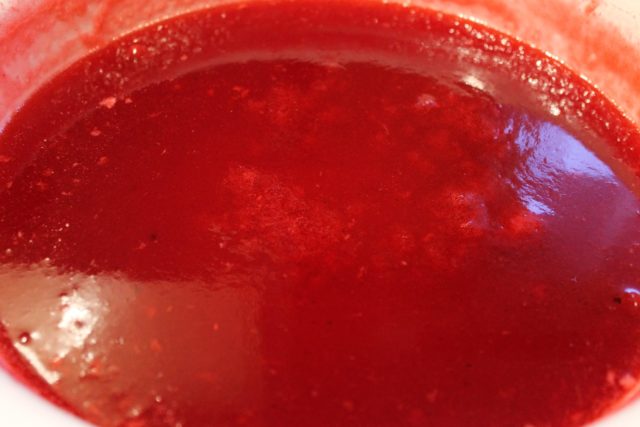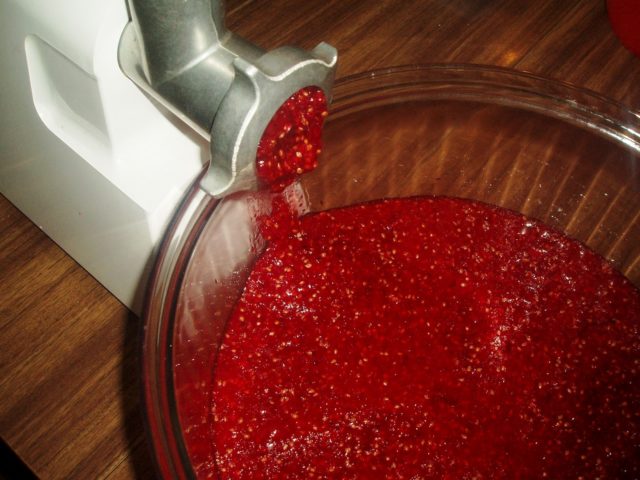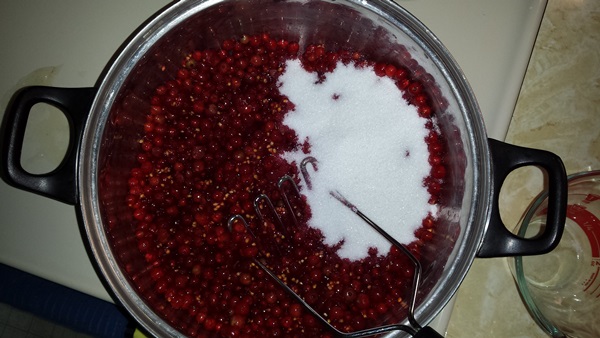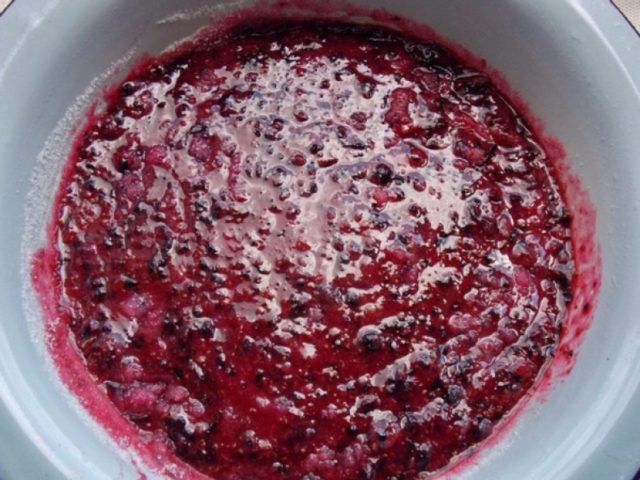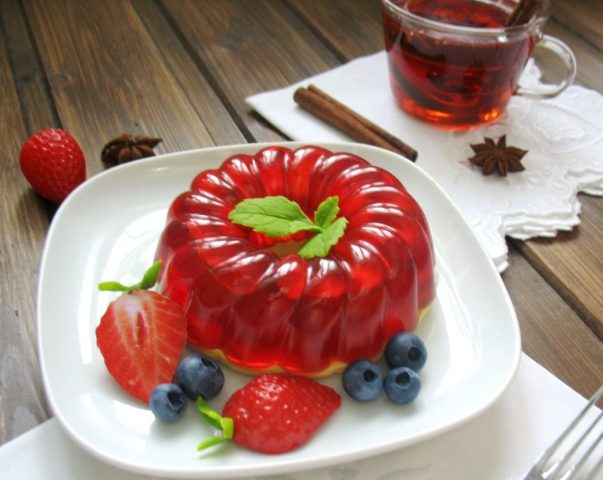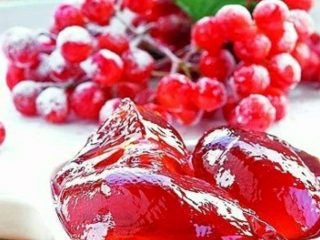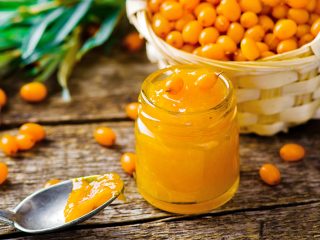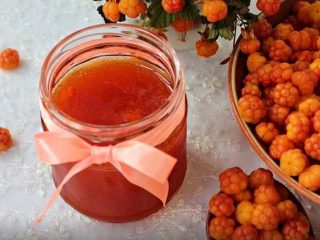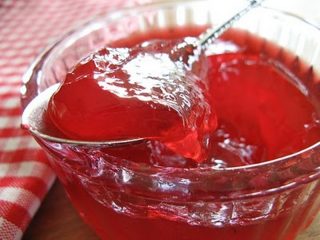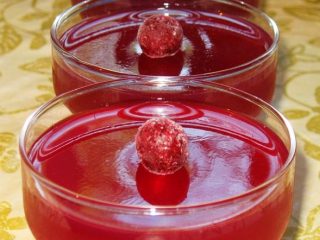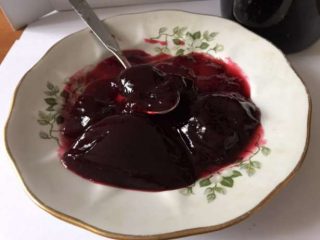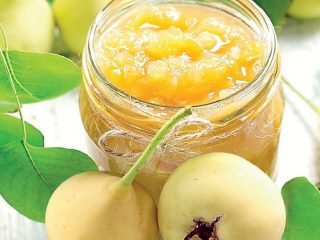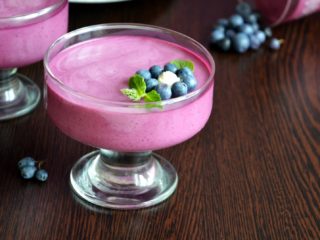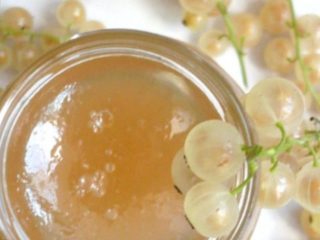Content
Red currant is a berry that is often used to make jams, jellies, and fruit puddings. Currant fruits have a recognizable sweet and sour taste. The culture grows throughout the main regions of Eurasia. No-cooking red currant jelly for the winter is prepared according to different recipes, using additional ingredients.
Benefits of raw redcurrant jelly for the winter
In terms of benefits, raw currant jelly is comparable to the effect of fresh berries on the human body. Proper preparation makes the product not only tasty and healthy, but also able to be stored for a long time.
Jelly from currant berries is prepared without additional cooking and left for the winter. During the cold season, such a vitamin preparation helps to increase the body’s immune strength, as well as prevent the development of many diseases.
- The red berry contains unique substances - coumarins. Thanks to this property, the quality of blood clotting improves.This helps prevent blood clots, which is why red currants are often recommended to improve blood circulation.
- Antioxidants and a high content of vitamin C make currant preparations useful for the prevention of colds, and also help prevent vitamin deficiency.
- Microelements, vitamins and beneficial elements help restore the activity of body systems at different stages of rehabilitation after illness.
- Fiber activates digestion processes, helping to cleanse the body of toxins and harmful substances.
- Red currant has a rejuvenating effect. Regular use improves the condition of hair, nails, and the upper layer of the epidermis.
- The berry has diuretic and choleretic properties. These influences help to avoid edema and activate the activity of the body’s main filtration organ – the liver.
- Pectin, which is contained in red currants, helps maintain the natural state of cells and activates regeneration processes.
Red currant jelly, prepared cold, normalizes the activity of brain cells when consumed regularly.
Features of preparing redcurrant jelly without cooking
Heat treatment of any fruit reduces the benefits. Experts say that ascorbic acid significantly changes its structure when exposed to high temperatures, so the cold cooking method is more in demand.
For jelly, ripe berries of a rich color are collected. The ripening time depends on the climatic conditions of the region. As a rule, crops ripen unevenly. The fruiting period extends from mid-July to mid-August.Some late-ripening varieties can bear fruit until the end of August.
The composition of red currants is known for the content of natural pectin. This is a substance that is a natural thickener, so berry jelly does not need to add special components to create structure.
It is recommended to make jams and preserves from fresh fruits. Berries that have been stored for a long time release juice and become unsuitable for cooking. The juice remains a binding component during preparation: thanks to its properties, the workpiece takes on a jelly-like shape and is stored after cooking.
The peculiarity of the berry is that even with the most careful picking, small twigs and petioles remain among the fruits. Before preparing the jelly, the fruits are sorted and excess elements are removed. The berries are washed by soaking in warm water for 10 minutes. Then shake and place on a towel to absorb excess liquid.
Recipes for red currants without cooking
Without cooking, jelly from berries such as red currants can be prepared for the winter using any of the available methods. Some of them allow you to use juicers or blenders. In this case, it is necessary to carefully separate the juice from the resulting cake.
Types of jelly recipes are divided into several groups:
- with or without gelatin, agar-agar;
- without additional cooking or by boiling until the sugar is completely dissolved, followed by cooling.
A simple recipe for red currant jelly without cooking
To prepare red currant jelly without cooking, take ingredients in standard proportions: for 1 kg of sugar - 1.2 kg of currants.
The prepared fruits are passed through a meat grinder. The resulting pulp is laid out in a loose layer on gauze or a clean cloth folded in half, crushed, the juice is squeezed out and drained separately. The remaining pulp after squeezing is removed for further use.
Mix the juice and sugar and leave until the crystals are completely dissolved. When infusing, cover the container with a clean lid or towel. After complete dissolution, the workpiece is left at room temperature for 12 hours.
Red and white currant jelly without cooking
Currant berries are prepared, then covered with sugar, and 1 glass of water is added per 1 kg of berries. Mash the currants with a masher or spoon and leave until the sugar dissolves. After 3-4 hours, the resulting liquid is drained and filtered.
Gelatin (2 g) is soaked until it swells, then mixed with the resulting liquid. Gelatin and syrup are intensively stirred and put in the refrigerator.
Calorie content
The recipe for cold redcurrant jelly involves using less sugar. The gelling components of the fruit help maintain the density of the prepared dish. Sugar improves and enhances the natural taste of red currants.
The main share of calories comes from sugar. Jelly prepared according to the classic recipe in a cold way has an indicator of about 245 kcal. The mixture consists of proteins and carbohydrates, with the carbohydrate level exceeding 80%.
Storage period and conditions
Homemade products can be stored under optimal conditions for several years. The mixture is stored in the refrigerator without additional heat treatment.
During subsequent sterilization of the jars, the workpiece can be stored from 6 months to 2 years. Sterilization is a method of heat treatment of storage containers. They are processed using one of the selected methods:
- using steam;
- in the oven;
- by boiling.
The prepared mixture is placed in jars and then stored. Conditions of detention may vary. Jars can be stored on the bottom shelf of the refrigerator for 6 months to 1 year.
On the basement shelves, the workpieces are stored without loss in glass jars for up to 2 years. At the same time, take into account that the jars should not be exposed to sunlight. In addition, home canned food is not stored near heating appliances, which are sometimes used to heat potatoes during particularly cold seasons. It is also not recommended to refreeze the products: the best saving option is considered to be storage with controlled air temperature, fluctuations in which can cause fermentation or molding of the product.
Conclusion
No-cooking red currant jelly for the winter is a unique and healthy product. The jelly-like structure is liked by adults and children; regular use of the jelly product prevents colds and increases immune defense.
